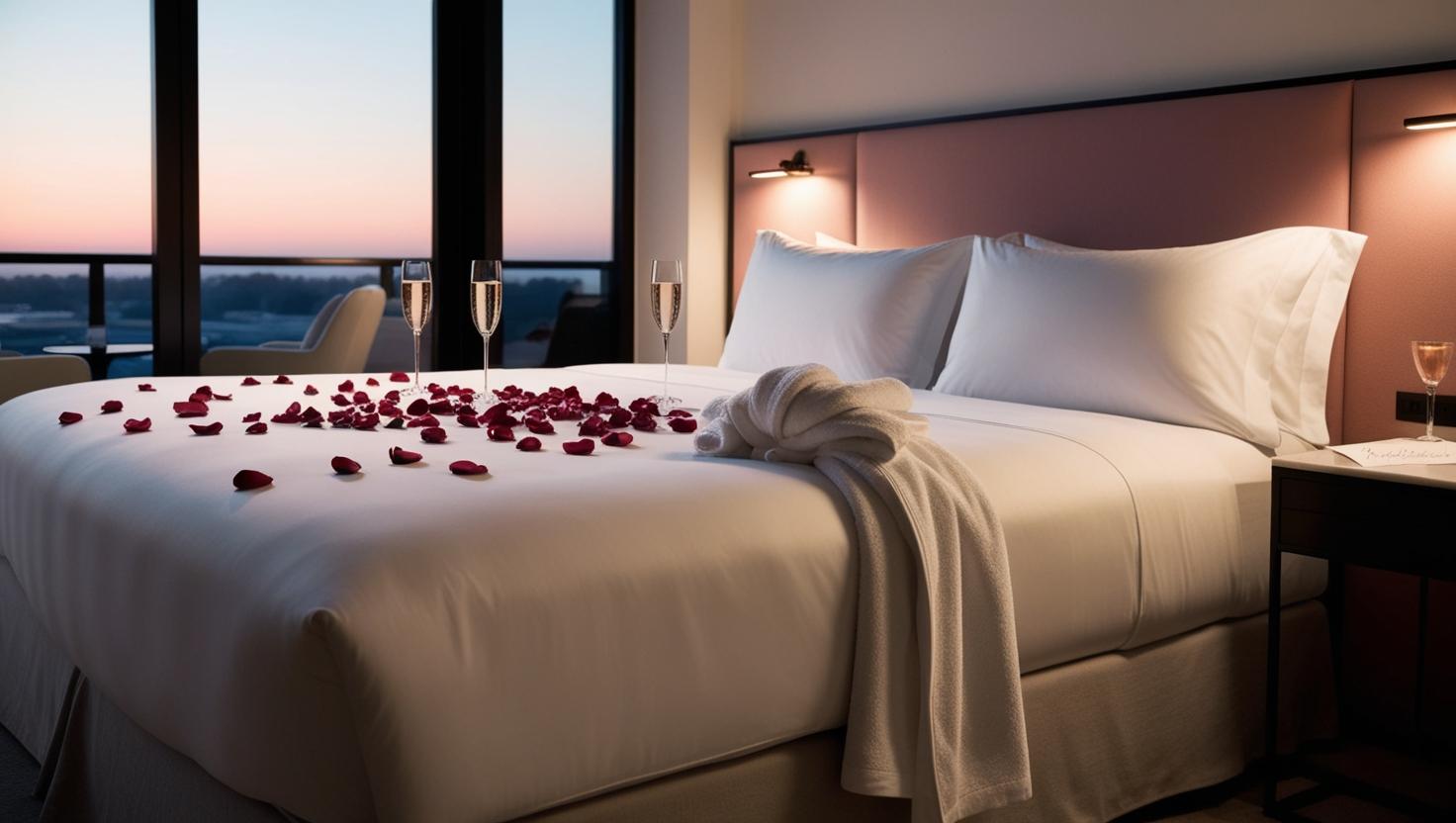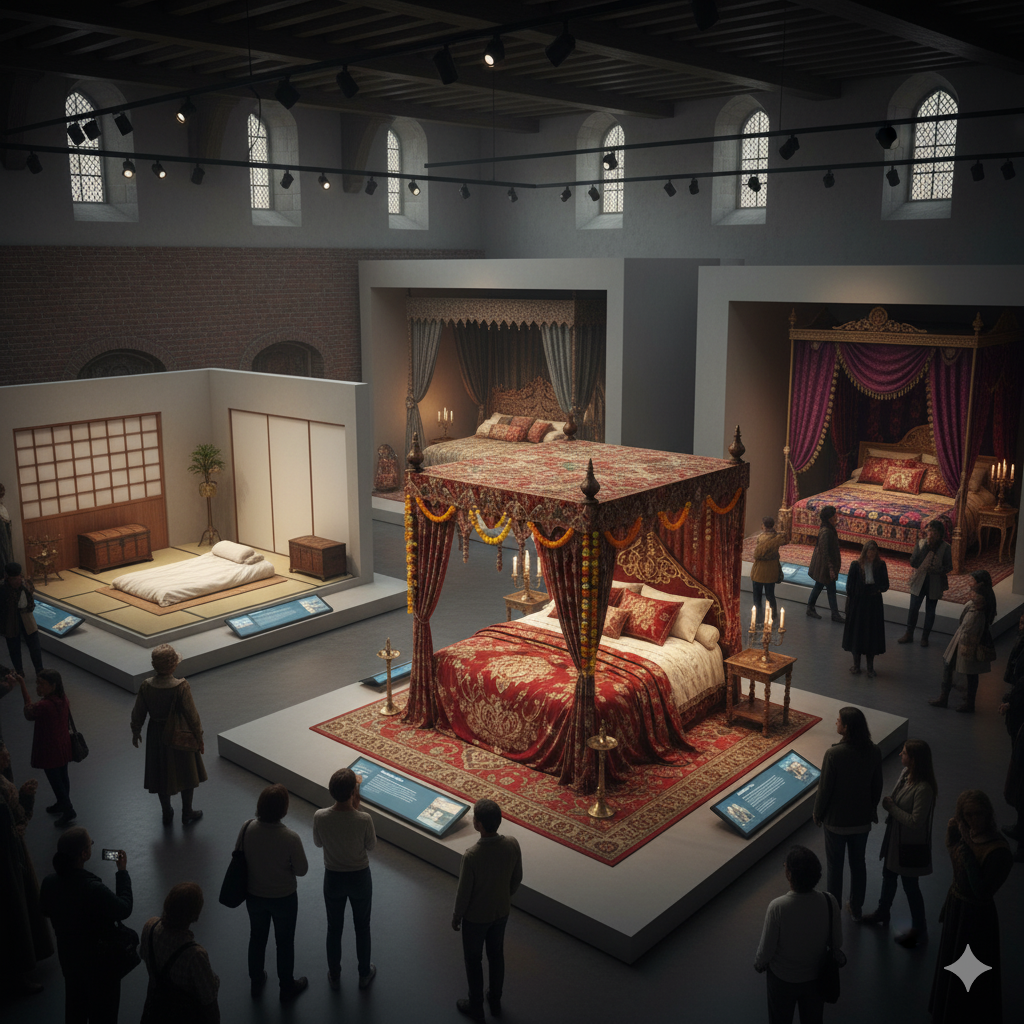Bedding Ceremonies: Their Role in Historic Weddings
The role of bedding ceremonies in historic weddings reveals how they served as a powerful bridge between private vows and public affirmation—transforming an intimate moment into a communal ritual that signified legitimacy, unity, and the binding of not just two individuals, but entire families and social orders.
Key Takeaways
- Bedding ceremonies symbolized the union of families and legitimacy of marriage.
- The Catholic Church gave spiritual weight to these intimate rituals.
- Modern wedding customs still echo these traditions subtly today.
The Public Spectacle of Medieval Weddings
In medieval Europe, weddings were grand, public affairs. Far from the private celebrations we know today, they often unfolded in front of entire communities. A highlight of these events was the bedding ceremony, where nobles and royalty gathered to ceremoniously escort the couple to bed. This public gesture wasn’t merely for show—it served as a powerful social and political statement. Witnesses, often of high rank, confirmed the legitimacy of the union, which was especially vital for alliances, lineage, and inheritance rights.
In some regions, the ceremony included music, toasts, and ritualistic practices like removing the bride’s garter or presenting nightwear. These actions symbolized a transition not just into marriage but into adulthood and family responsibility. The communal nature of these traditions reflected a time when marriage was as much a public alliance as a private relationship.
Learn how bedding ceremony myths differ from reality to better understand the cultural symbolism behind the ritual.
The Church’s Role in Wedding Rituals
The Catholic Church played an instrumental role in shaping medieval marriage customs, including bedding ceremonies. Priests often blessed the couple’s bed with prayers, holy water, and relics, invoking divine protection and fertility. This intertwining of religious belief and everyday life gave sacred context to what might otherwise be a mere contractual agreement. Scattering herbs like rosemary or lavender wasn’t just for fragrance—they symbolized fidelity, purity, and spiritual cleansing.
Religious officiation also served to regulate societal norms. Couples could only consummate their union after receiving the church’s approval, typically granted during a formal blessing. Church teachings emphasized procreation as the marriage’s primary purpose, so rituals reinforcing fertility were commonplace.
This spiritual oversight echoed the Church’s broader influence over personal life, from baptisms to funerals. By including symbolic rituals in a couple’s first night together, society reinforced both divine order and family expectations. For a wider understanding of religious roles in intimacy and marriage, see the Sleep Foundation on bedroom environment impacts.
Spiritual and Social Dimensions
These practices did more than sanctify the bedroom. They embedded marriage into the very fabric of faith and family. Parents and elders often joined in or observed the ceremony, lending social weight and spiritual blessing to the intimate union. In many ways, this bridged heaven and home, reinforcing that the marriage was not just between individuals but entire communities.

Even today, we echo this sacred alignment with practices like lighting unity candles or sharing spiritual vows during weddings. They’re quiet remnants of a deeply intertwined past.
Aristocratic Traditions and Marriage Validation
For aristocratic families, bedding ceremonies were more than custom—they were legal documentation. High-stakes marriages involving land, titles, or alliances required indisputable proof of consummation. Witnesses, sometimes female attendants or male envoys, were tasked with verifying the union. While this may seem invasive by modern standards, it was essential in eras where heirs, inheritance, and legitimacy were constantly scrutinized.
Special linens or garments were often presented after the night, showing proof of virginity or consummation. These items sometimes became part of estate records, further emphasizing their legal significance. In cases of disputes, such evidence determined whether children born from the marriage would inherit property or titles.
Learn how squeaky bed frames reflect both utility and tradition in the evolution of intimate spaces.
Also see Good Housekeeping’s history of marriage for more on shifting norms.

The Fade of Formal Wedding Rituals
The 19th century ushered in new ideals—modesty, romance, and personal privacy. As Victorian values spread, public rituals like bedding ceremonies were replaced by quieter, emotionally driven wedding practices. The honeymoon emerged as a new ritual, allowing couples private time to begin their life together away from prying eyes.
These changes didn’t erase tradition entirely. Instead, they reimagined it. Carrying the bride over the threshold, tossing the bouquet, or sleeping in a beautifully made bed with embroidered linens still reflect the sentiment of ceremonial beginnings. The shift from public display to private ritual marked a cultural pivot in how intimacy was honored.
Discover how platform beds have become symbols of individualized comfort, echoing the evolution of shared but private space in modern relationships.
Modern Wedding Traditions with Historic Roots
While bedding ceremonies no longer unfold in public halls or castles, their influence lives on in today’s wedding traditions. The attention to creating a romantic, sacred space for the newlyweds echoes the ceremonial intentions of old. From rose petals on the bed to curated playlists and personalized vows, couples still mark this milestone with thoughtfulness and symbolism.
Modern bridal suites mirror the purpose of historical bedding chambers. They offer a moment of retreat, privacy, and celebration after the public festivity. Many couples also infuse cultural or religious rituals into this space—be it prayer, shared meals, or meaningful gifts. It’s no longer about spectatorship but significance.
Explore sleep hacks that support modern rituals as part of your post-wedding sanctuary with touches that blend modern comfort with time-honored tradition.

Conclusion
From grand public displays to private honeymoon suites, bedding ceremonies show how wedding rituals reflect evolving cultural values. These ceremonies wove intimacy and social structure into one, and their legacy continues to shape how we honor love and commitment today. Whether rooted in sacred blessings or symbolic gestures, they remind us that marking the start of a marriage has always mattered deeply.
FAQ
- What was the purpose of bedding ceremonies?
- They publicly validated marriages and united families, often reinforcing political or social alliances.
- Did the Church support bedding ceremonies?
- Yes, it often blessed the union, combining religious sanctity with cultural traditions.
- Are there modern equivalents to bedding ceremonies?
- Yes, elements like bridal suites, rose petals, and symbolic rituals echo these traditions today.
- When did bedding ceremonies stop being common?
- They gradually disappeared during the Victorian era as private and romantic ideals took precedence.
- Were bedding ceremonies practiced outside of Europe?
- While this article focuses on Europe, similar customs existed in other cultures with their own unique expressions.
Related reading from Cozy Bed Quarters
- Your Ultimate Guide on How to Clean a Bed Mattress
- Clean Stains Out of Mattress: Step-by-Step Guide
- Platform Bed: Modern Sleep Solution with Minimalist Style




















